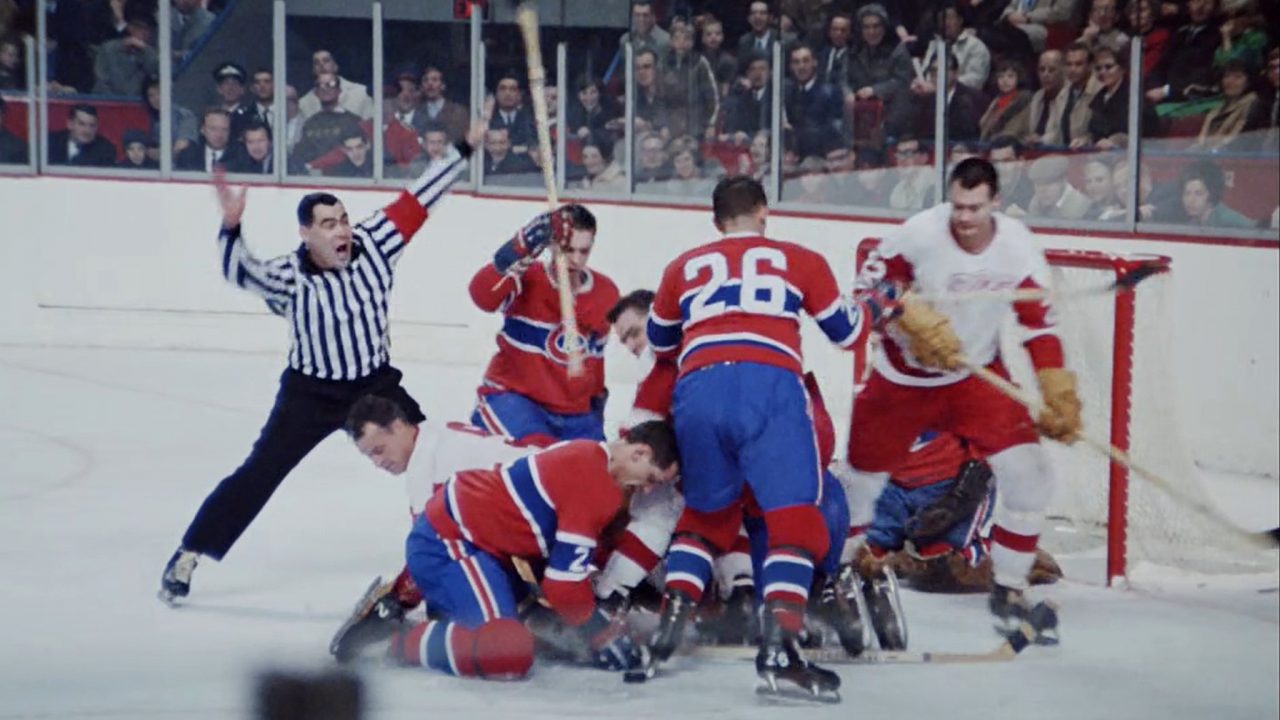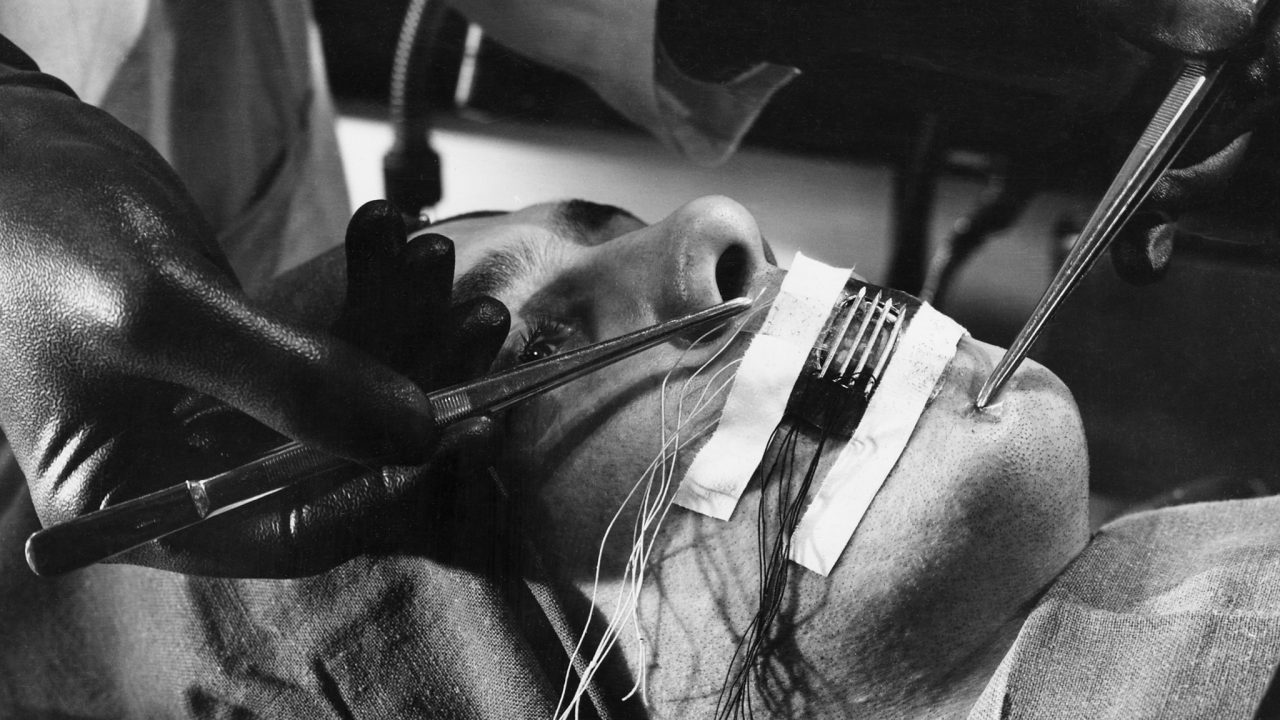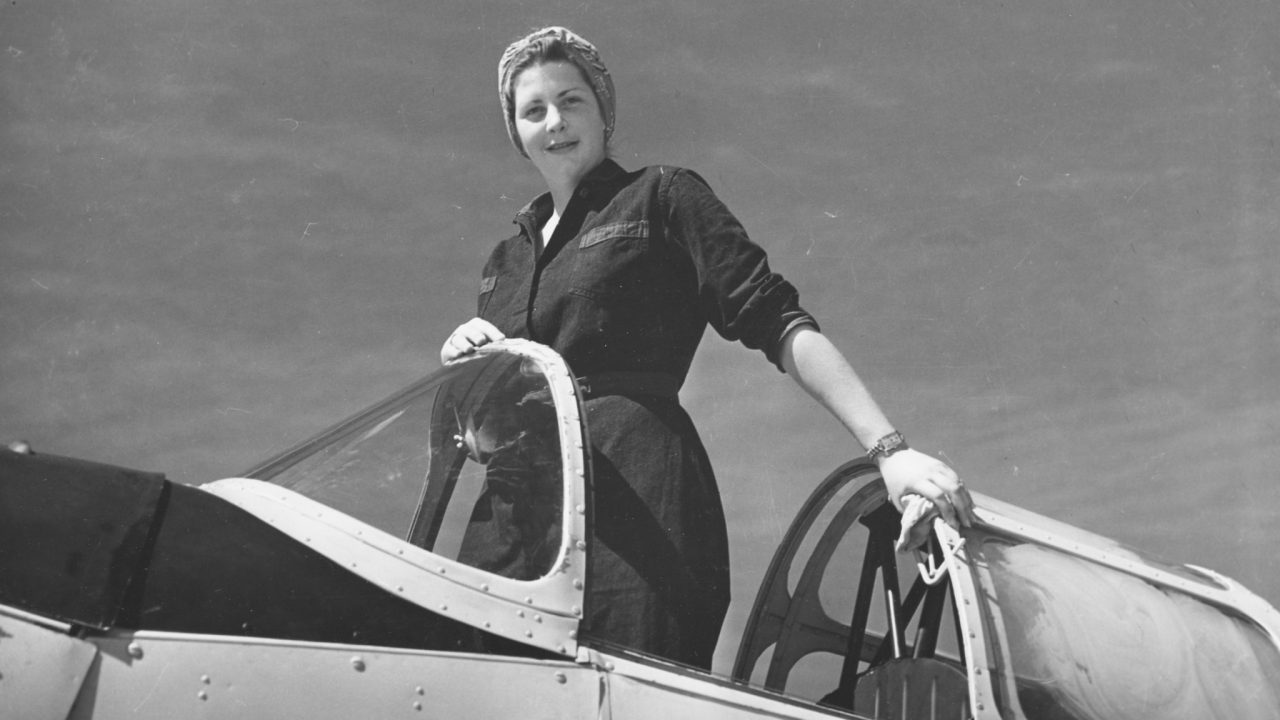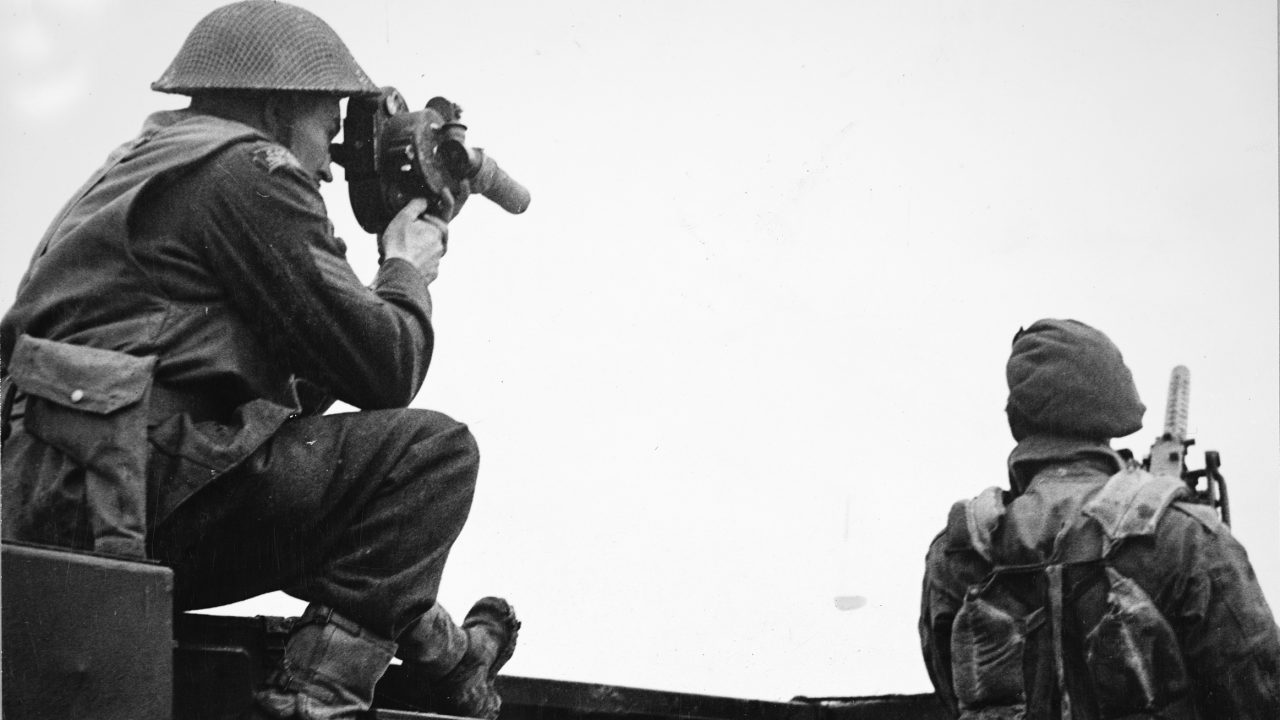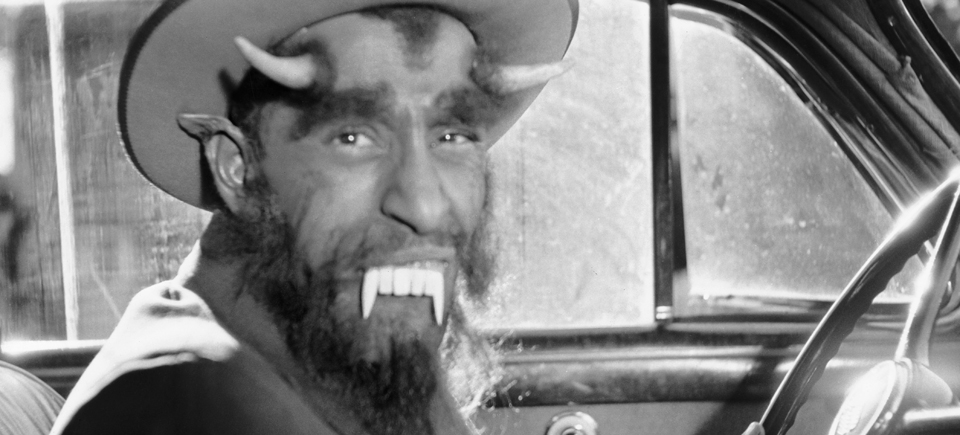
“Canada Carries On” and the postwar years: the National Film Board in transition
“Canada Carries On” and the postwar years: the National Film Board in transition
During World War II, the NFB launched a theatrical series intended to provide Canadians with a uniquely Canadian view of the conflict and to inspire and encourage them to be part of the war effort. Called Canada Carries On, the series was distributed by Columbia Pictures, which released a new episode every month to some 800 theatres across Canada. CCO’s wartime films included such classic titles as Oscar winner Churchill’s Island.
Inspiring the postwar crowd
When the war ended, the NFB had a major decision to make: Would they keep the series going and focus on peacetime issues, or would they cancel it altogether? After some debate, the decision was made to continue, and to turn the lens on Canadian contributions to science and welfare, industry and crafts, and music and art. The NFB’s other major series, The World in Action, was not so lucky. It was cancelled when its American distributor, United Artists, pulled the plug on the project.
Back to Jobs was one of the first postwar CCO efforts. Released in November 1945, it was the perfect film to tackle the transition between war and peacetime activities in Canada. Following veterans who’ve returned to Canada and are going back to work as “productive citizens,” the film stresses that industry, government and communities must collaborate to make postwar Canada work. Back to Jobs is very optimistic, but nevertheless spends a great deal of time looking at the rehabilitation of veterans wounded during the conflict.
Back to Jobs, , provided by the National Film Board of Canada
Bookings for Canada Carries On films continued in Famous Players theatres and other cinemas throughout Canada. Some films were also sold to individual theatres periodically. Columbia Pictures continued to distribute the series, with France Films handling its French counterpart, En Avant Canada, in Quebec and New Brunswick.
The NFB in postwar crisis, financial and ideological
In 1948, the NFB suffered one of the worst rounds of budget cuts in its history. Not only was the budget slashed, but the 12 existing production studios were reduced to a mere four. Many in the Canadian government thought that, with the war over, the NFB had outlived its usefulness. There were also allegations of communist sympathizers at the agency, which forced the government to tread carefully and rethink how the NFB should be used. (The allegations proved to be baseless.)
It was important to ensure that the NFB’s theatrical presence remained strong despite this drastic restructuring. With this in mind, a new series of short monthly newsreels, entitled Eye Witness, was created. Each episode of Eye Witness included several short reports intended for the non-theatrical market (public libraries, community centres and the like), but these proved so popular that they were sold to theatres beginning in February 1950.
Eye Witness No. 54, Daryl Duke, Felix Lazarus & Jack Long, provided by the National Film Board of Canada
A light-hearted look at Canadian life
The National Film Board’s policy on producing newsreels was to avoid competition with commercial companies. An agreement stipulated that NFB filmmakers wouldn’t film anything that was strictly news, so instead they devoted their energies to short feature subjects, capturing images of Canadian life across the country. The same could be said of the CCO films, which were basically 10-minute reports on some aspect of Canadian life.
The April 1950 episode of Canada Carries On, Gentleman Jekyll and Driver Hyde, was celebrated as the 10th-anniversary film of the series. This humorous look at the problem of road accidents was one of the most popular of the postwar films in the series.
Gentleman Jekyll and Driver Hyde , David Bairstow, provided by the National Film Board of Canada
Although most of the CCO films were original productions, some were adaptations of older NFB titles that had been released in the non-theatrical market. Producers would re-cut these films, creating a 10-minute version for theatres. One of these, Return of the Indian, was an abridged version of a half-hour documentary sponsored by the Department of Citizenship and Immigration. New narration was provided and the film went out to theatres in June 1955, receiving excellent reviews.
Return of the Indian, Grant McLean, provided by the National Film Board of Canada
The 1950s and the arrival of television
When television came to Canada in 1952, the NFB started to produce new series for the medium. Though the two NFB theatrical series continued their run, it was clear that the viewing numbers from television broadcasts would surpass those from the big screen. In 1955, some 9 million people watched NFB films in theatres—as opposed to 20 million viewers for NFB films on television. With the cost of making a television film considerably less than an equivalent theatrical film, the NFB decided to divert more of its budget to television productions.
One CCO film, British Empire and Commonwealth Games, was particularly successful. It was released in September 1954, only a few weeks after the event, and presented highlights of the 1954 Vancouver games, including the famed “miracle mile” race between Roger Bannister and John Landy.
British Empire and Commonwealth Games , Jack Olsen, provided by the National Film Board of Canada
The few successes apart, dwindling theatrical attendance forced the NFB to cancel the Eye Witness series in 1958, in order to give Canada Carries On a better chance (and a bigger budget). But CCO would only last a short time longer: in 1959, with only six films released that year, the series was cancelled after 19 years on Canadian theatre screens.
Creating outside the formula of a series
The theatrical program continued, but the films were no longer conceived as part of a series; the NFB preferred to produce theatrical titles on a film-by-film basis. Two of the NFB’s biggest box-office hits of the 1950s, Royal Journey (1951) and The Stratford Adventure (1954), had been made as special one-offs outside of CCO. These filmmakers weren’t restricted to following the series formula, giving them the freedom to shape the films into short colour features, which were much more appealing to audiences. It worked. Both were huge hits in Canada and abroad.
With theatres requesting fewer short films in the 1960s, the NFB concentrated on making features for the big screen and shorter documentaries for television.
The era of short documentaries gracing the nation’s screens is long gone. During the 1940s and 1950s, Canada Carries On presented Canadian life to Canadians in every region of the country. The series will forever be remembered as the first produced by the NFB, but it should also be remembered for its remarkable 14-year run after the war, and for bringing stories of Canadian life in peacetime to theatre screens across the country—fulfilling the NFB’s mandate and then some.
Enjoy the films.
(Read a more comprehensive post I wrote about the wartime series here.)
